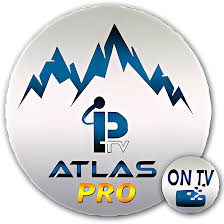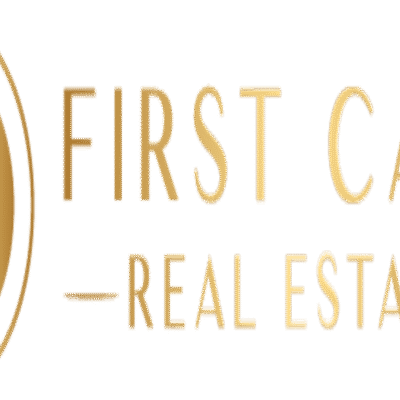Let’s not beat around the bush: ISO 17025 training comes with a price tag. You’re looking at costs for courses, trainers, and maybe tools like LIMS (Laboratory Information Management Systems) such as LabWare or StarLIMS to streamline compliance. For a small biotech lab, that can feel like a punch to the gut. I once talked to a lab manager in Boston who nearly skipped ISO 17025 training because the costs seemed steep. A year later? She said, “It was the smartest move we ever made.”
Why? Because the benefits are massive. Her lab secured a contract to test samples for a major pharmaceutical company because their trained team aced an ISO 17025 audit. The deal was worth millions—far more than the training cost. Plus, their improved processes cut test turnaround time by 20%, boosting efficiency. That’s not just a win—it’s a game-changer.
Here’s a tip: you don’t have to train your entire lab at once. Start with key staff—like quality managers or lead technicians—and roll it out gradually. It’s like setting up a new experiment: you perfect the method before scaling it up.
A Quick Side Note: It’s About Your Team
You know what? ISO 17025 training isn’t just about standards or audits. It’s about your people—the scientists, analysts, and technicians who keep your lab humming. Training them in ISO 17025 gives them the tools to spot errors, follow protocols, and take pride in their work. I’ve seen lab teams go from “compliance is a chore” to being obsessive about precision after training. Why? Because they know their results could lead to life-saving drugs or therapies.
And let’s not forget your clients and regulators. In a world where lab scandals make headlines, ISO 17025 training is like a warm handshake. It says, “Our data is solid.” That’s huge when you’re pitching to big pharma or facing an FDA inspection.
How ISO 17025 Training Fits Into Pharma and Biotech Labs in 2025
Let’s zoom out for a sec. The pharmaceutical and biotech industries are evolving at warp speed. Gene therapies, AI-driven drug discovery, and global supply chains are reshaping labs, but they come with new challenges—like ensuring data integrity across complex systems or meeting stricter regulations. ISO 17025 training is like a compass for navigating this landscape. It prepares your team to meet standards for testing and calibration, which are critical in modern labs.
And here’s something else: scrutiny is intense. In 2025, with regulatory bodies like the FDA and EMA tightening rules—think updated ICH Q2(R2) guidelines for analytical validation—compliance is a constant headache. ISO 17025 training aligns your lab with these requirements, making it easier to stay in the clear. Plus, with trends like personalized medicine and sustainability gaining traction, ISO 17025’s focus on reliable, defensible results keeps you in sync with what clients and regulators want.
Oh, and have you noticed how many labs are touting their ISO 17025 credentials at conferences like Pittcon or on LinkedIn? It’s not just showing off. With economic uncertainty still lingering, clients are pickier about who they trust. Training gives you a competitive edge in a crowded market.
Getting Practical: How to Get Started with ISO 17025 Training
Alright, let’s get down to business. You’re sold on ISO 17025 training, but how do you make it happen? It’s not like you can snap your fingers and have a trained team. Here’s a straightforward roadmap to guide you:
- Understand the Standard: Check out resources from ISO or ILAC to get a handle on ISO 17025 requirements. It’s all about building a lab that delivers reliable results.
- Find a Training Provider: Look for reputable platforms like Perry Johnson Laboratory Accreditation, ANAB, or BSI’s training programs. Choose courses that offer practical, hands-on learning tailored to pharma and biotech.
- Train Key Staff First: Start with lab managers, quality leads, or senior technicians who can drive the process. They’ll help spread the knowledge to the rest of the team.
- Apply What You Learn: ISO 17025 training isn’t just theory. Have your team set up processes—like equipment calibration schedules or data integrity checks—to prepare for accreditation audits.
- Aim for Accreditation: Training is the first step toward ISO 17025 accreditation. Work with an accrediting body (like A2LA or UKAS) to get accredited and seal the deal.
Pro tip: don’t skimp on the training provider. A good one can make the process smoother and more effective. And if costs are a worry, check for grants—some governments offer funding for labs pursuing ISO 17025 training to boost competitiveness. Worth a quick search, don’t you think?
What If You Skip ISO 17025 Training?
Here’s something to chew on: what’s the risk of passing on ISO 17025 training? Sure, you save some cash upfront, but you might be setting yourself up for trouble. Without training, your team might struggle to meet regulatory or client requirements, leading to rejected test results or failed audits. Your competitors with ISO 17025-trained teams will look more reliable, even if your work is just as good. And if a data issue—like an inaccurate test result—slips through, you’ll have a harder time proving your processes are solid.
I heard about a small biotech lab in California that lost a contract with a big pharma client because their team wasn’t trained in ISO 17025 standards. The client didn’t even consider them. That’s the kind of missed opportunity that stings.
Wrapping It Up: Your Path to ISO 17025 Training Success
So, where does this leave you? ISO 17025 training isn’t just a course—it’s a way to make your pharmaceutical or biotech lab stronger, more trusted, and more competitive. It builds credibility, sharpens your processes, and opens doors to big clients and regulatory approval. Yes, it takes effort. Yes, it costs money. But the payoff? It’s like upgrading from a shaky pipette to a state-of-the-art analyzer—everything works better.
If you’re ready to get started, take it one step at a time. Talk to your team, research training providers, and maybe even chat with an accredited lab to get the lay of the land. The road to ISO 17025 training might seem long, but every step gets you closer to being the lab everyone trusts for life-changing results. So, what’s holding you back? Isn’t it time to show the world your tests are built on precision and trust?




